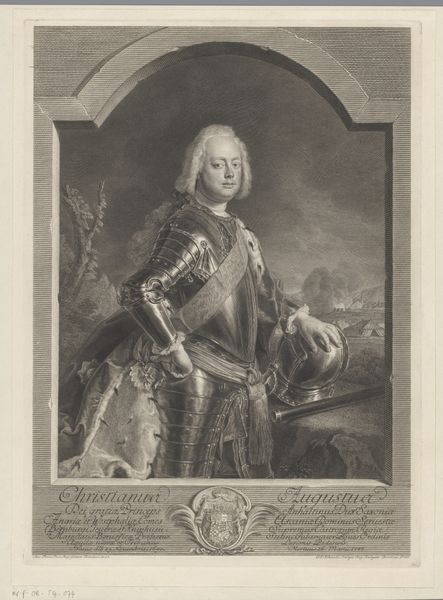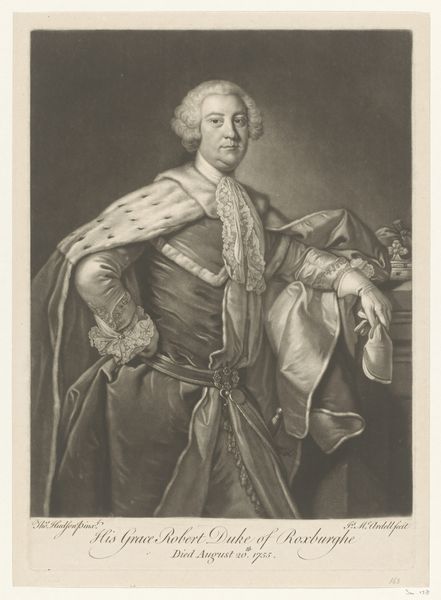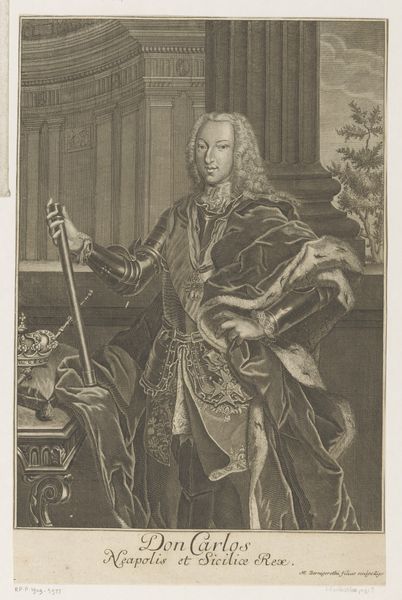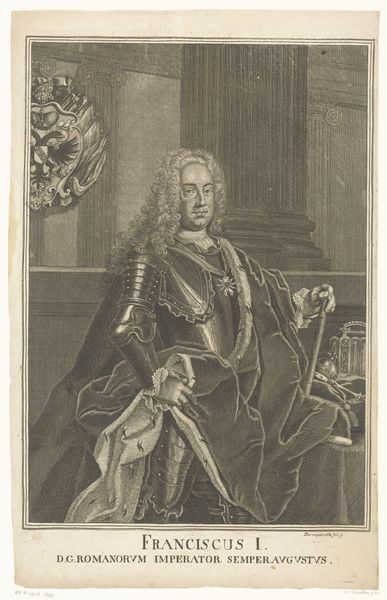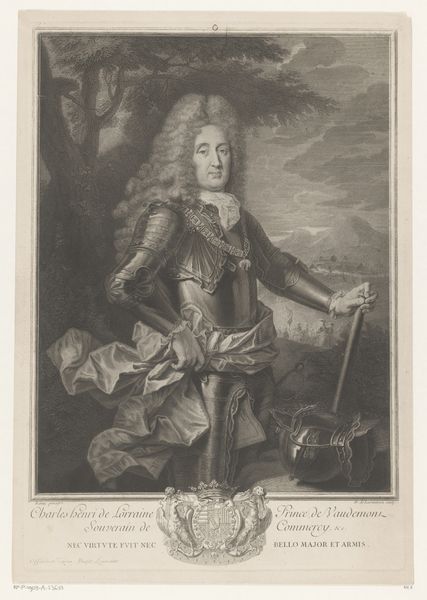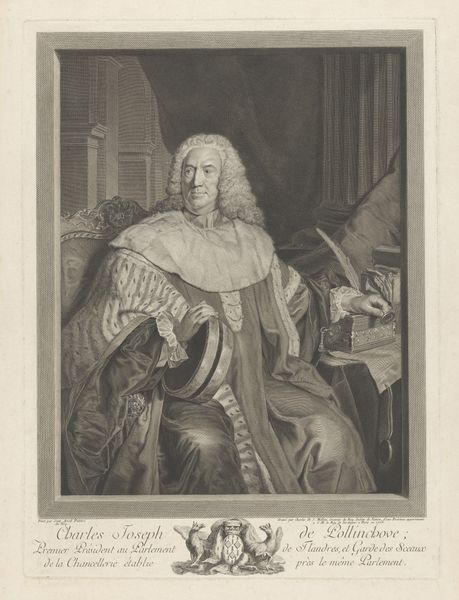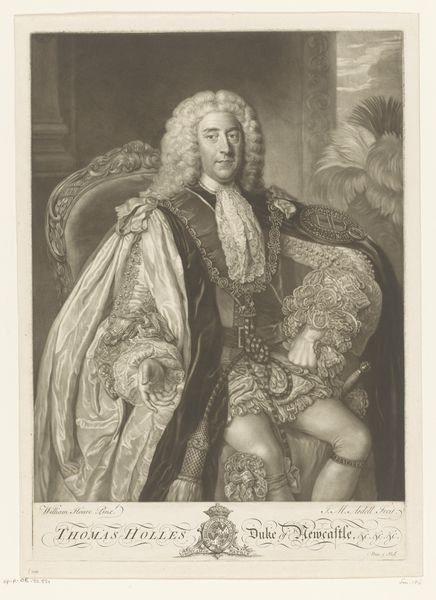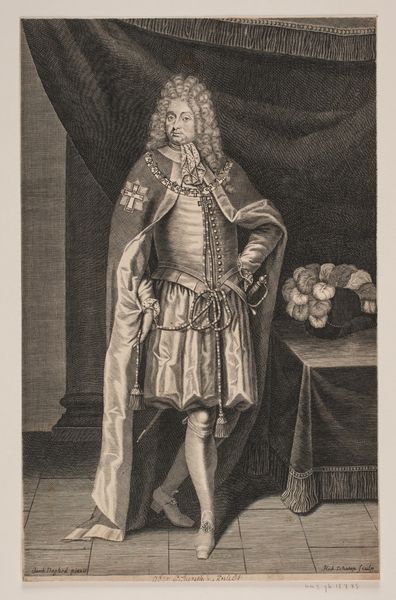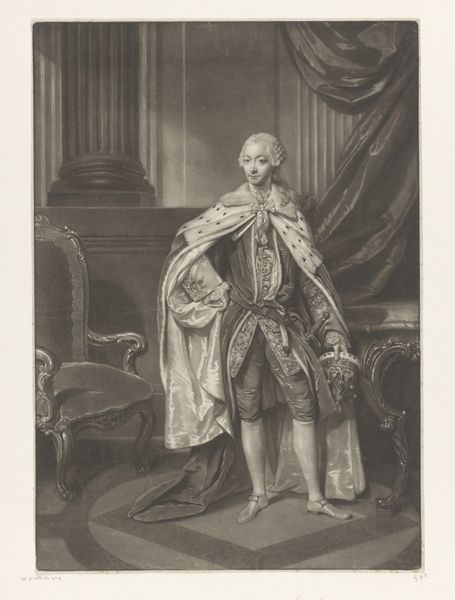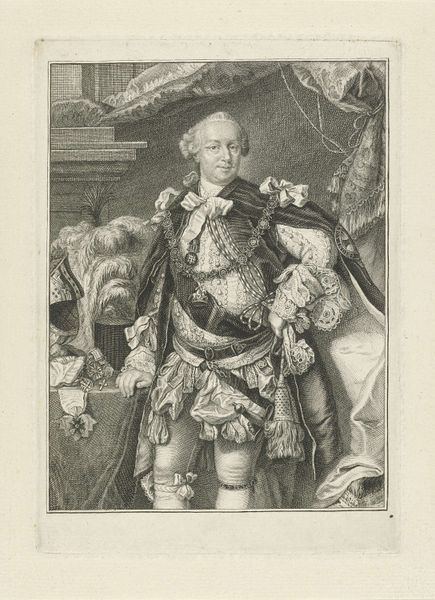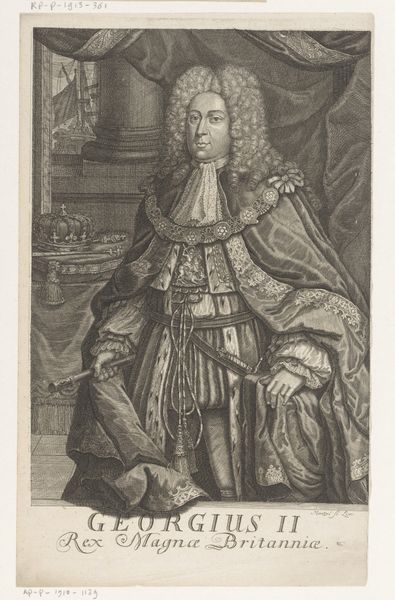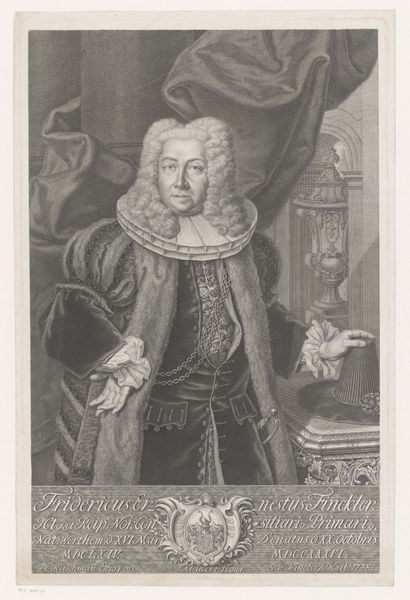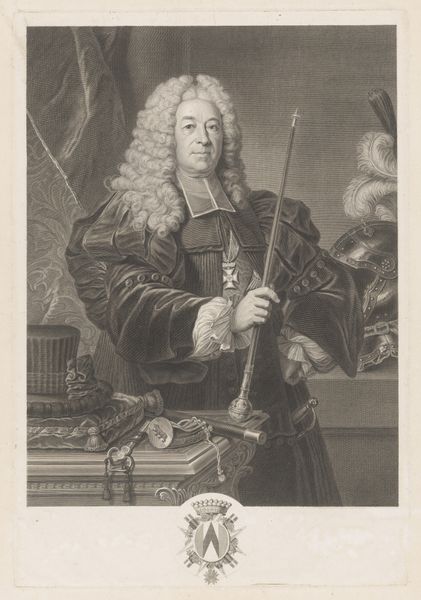
engraving
#
portrait
#
baroque
#
charcoal drawing
#
history-painting
#
engraving
Dimensions: height 505 mm, width 355 mm
Copyright: Rijks Museum: Open Domain
This is John Faber the Younger's portrait of John Hobart, made using the printmaking technique of mezzotint. Unlike etching or engraving which rely on incised lines, mezzotint involves roughening the entire plate, then selectively burnishing areas smooth to create lighter tones. Look closely, and you'll see how this process allows for rich tonal gradations, crucial for capturing the textures of Hobart's ermine-trimmed robes, the gleam of his sword, and the soft curls of his wig. It’s a labor-intensive process, demanding incredible skill. The original copperplate would have been worked on for weeks to achieve this level of detail. Consider too, the social context. Faber was a specialist printmaker, reproducing images for a growing market, a crucial gear in the engine of early capitalism. Mezzotints like this democratized access to portraiture, allowing those of middling means to participate in the culture of elite representation. Ultimately, this print reminds us that even seemingly straightforward images are deeply embedded in processes of making, and that these techniques have their own social and economic histories.
Comments
No comments
Be the first to comment and join the conversation on the ultimate creative platform.
